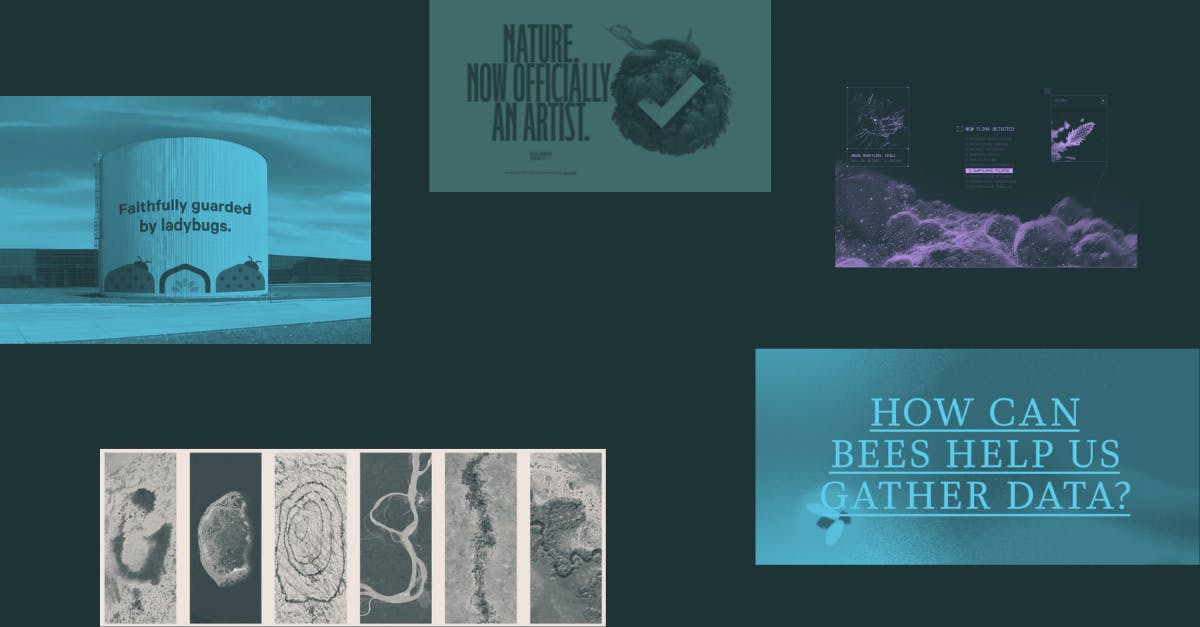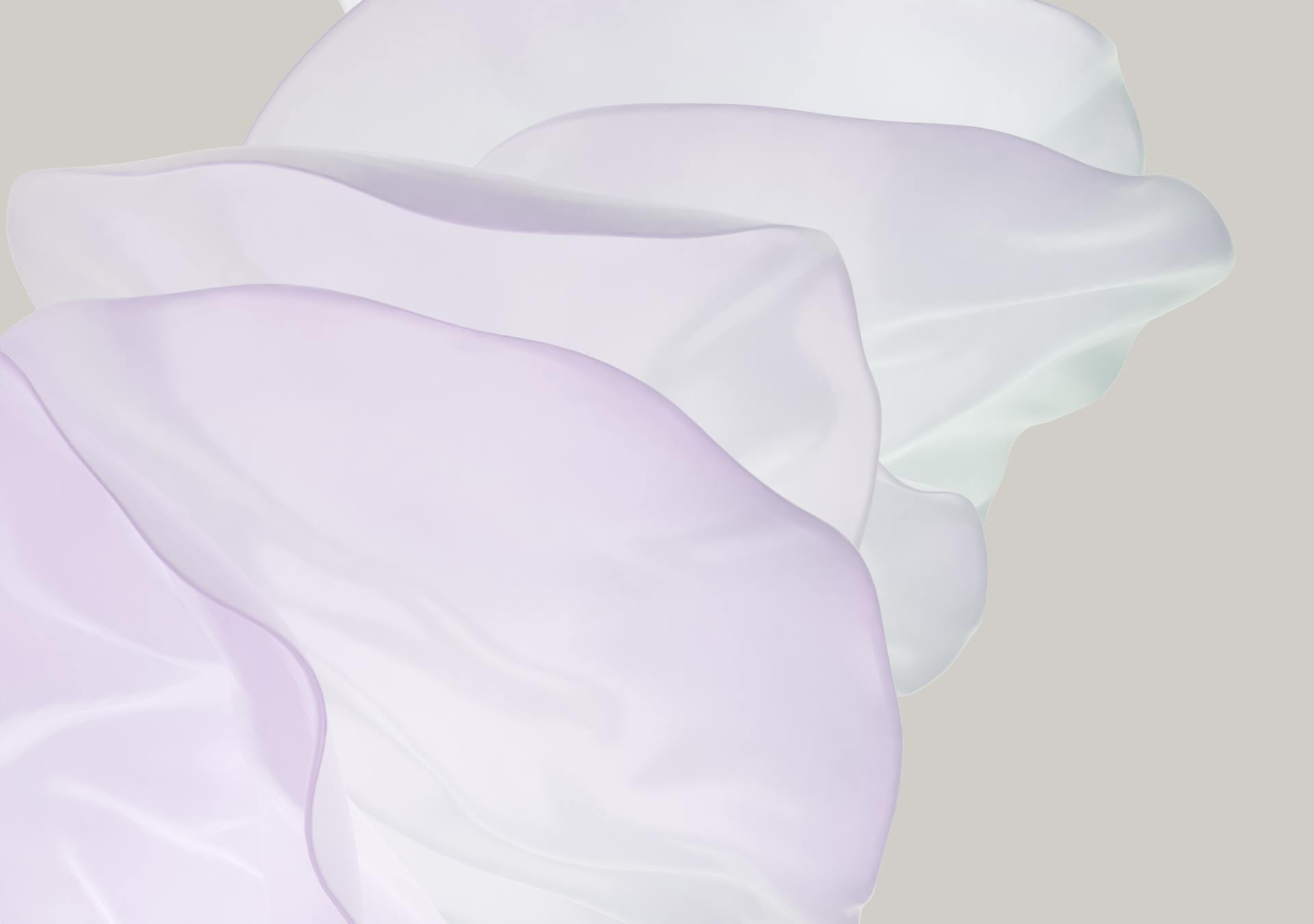
What does sustainability look like?
Written by
Jordan Stokes, Caroline Leung, Stephanie Lau, Alanna Roy Bentley, Jaymee Kim, and Alex Shute - Sustainability Transformation
Welcome to the latest edition of ‘What Does Sustainability Look Like?’
In this series, Edge Impact's creative team delves into their favorite purpose-driven designs, sustainable brands, and impactful ideas in the world of sustainability creative.
From Patagonia's satirical documentary ‘The Shitthropocene’ to Google's innovative Earth Day Doodle, we'll explore a range of sustainable designs that inspires change.
Microsoft: Reimagine Action by Koto

Written by Jaymee Kim, Senior Designer
At some point after 2019 came what felt like a sudden wave of AI, and honestly it kind of freaked me out thinking about how that would change the design world and my ways of working. Fast forward to 2024, I am very late to the game and have learnt to embrace the AI tools that were built to make life a little bit easier and efficient. Thanks to my colleagues, I’m constantly exposed to new ideas and innovative ways that organisations, creatives and people generally are embracing AI as a tool that goes beyond just benefiting ourselves, but to accelerate change and educate, “to shape a greener, brighter future” for the world around us.
Microsofts: Reimagine Action campaign by Koto Studio is precisely one of those projects that inspires by opening minds to the possibilities of AI, with an added sense of wonder. Bringing together the world of sustainability, technology and design together in a harmonious and thoughtful way.
The campaign takes a positive and playful approach from the tone of voice, illustration and overall design, communicating Microsoft’s ESG commitments in an thought provoking and visual way. The campaign prompts through questions that peak our sense of curiosity, paired together with beautiful illustrations that feel very reminiscent of Microsoft paint spray tool, and links back to each commitment in a way that educates readers.
It truly is a breath of fresh air seeing ESG commitments communicated in such a unique way, and inspires me as a designer to continue to seek innovative ways, rather than settling into the stock standard ESG frameworks
Nature Fresh Farms by Bruce Mau

Written by Caroline Leung, Design Director
A cute and charming find for the month! Bruce Mau helps a greenhouse grower with farms in Canada, US and Mexico Nature Fresh Farms with their brand strategy and identity to help tell their story and build brand awareness.
What I admire most about this brand identity is its bold yet simple aesthetic and the captivating copywriting that seamlessly aligns with the ethos of sustainability at its core. This thoughtful business stands out by innovatively adopting practices such as planting in coconut husks, utilising vertical growing methods, conserving water through a 100% closed-loop system, and fostering natural pollination with the humble bumblebee within their greenhouse, among other initiatives.
This exemplifies how effective brand and communication can infuse a brand with delight, avoiding the pitfall of appearing uninviting and overly technical. I hope this example inspires other businesses rooted in sustainability to embrace the power of brand and communications too.
Justified Studio and Space 10

Written by Jordan Stokes, Global Creative Director
Justified Studio and Space 10’s work for IKEA instantly reminded me of the work of Marshmallow Laser Feast and their exhibition Works of Nature at the ACMI which we shared in our February edition.
Both pieces of work use a complex mix of technologies and data mapping techniques to bring the world of our forests to life in more immersive, informative and creative ways.
But Justified Studio and Space 10 in their partnership have gone beyond just art and storytelling, giving purpose to the data mapping and visualisations by pairing them with powerful technology to help IKEA monitor and understand their supply chain better.
Whilst the Future Forest brand mark for the initiative seems a bit disconnected and with the brand itself not really having much of a footprint online, the hero of the project really is the stunning visuals that have made incredibly complex data, insights and real-time monitoring a thing of beauty.
Mapping of source materials and supply chain data is something that few businesses have done well and certainly not at a level that could be considered art, however through this project, the IKEA tree supply chain can be constantly monitored, measured and visualised in a way that makes the health of the forests easier to understand and then managed.
Part of the project’s agenda is to explore the use of advanced tools like LiDAR, environmental DNA, and Web3 in mapping and visualising the data to build a deeper understanding of how businesses, activists and the public can play a more successful role in responsible forestry. Additionally, with a more up-to-date view of the health of their supply chain; IKEA will be more resilient to how climate change and the effects of deforestation might impact their ability to do business.
When we’re able to communicate complexity of this scale in such visually beautiful ways, we build greater connection with our audiences. In this case, not only are we mapping, monitoring and understanding a natural habitat and supply chain more intimately, we are also helping more people connect with it and where the products they buy actually come from.
From brand strategy to digital campaigns, we help organisations of all sizes embed sustainability authentically.
Learn more about our Brand, Communications & Creative Services.
The Shittropocene by Patagonia

Written by Stephanie Lau, Manager, Sustainable Transformation
When the investigative documentary, ‘The True Cost’, came out in 2015, it pulled back the curtain on the fashion industry and shared the uncomfortable truth of who really pays the price for the clothes we wear. Yet, almost a decade later, we’re buying more clothes than ever before – with projections that we will be buying 102 million tonnes of clothing by 2030, the equivalent to more than 500 billion extra T-shirts!
In short, the notion of buying less doesn't seem to be landing.
So, when Patagonia released their new satirical documentary in late April, ‘The Shitthropocene’, it helped to steer the conversation in a way that felt different from what we usually see when it comes to sustainability in fashion.
In 45 minutes, we get taken through how our consumption habits have evolved through the ages, from our hunter-gatherer ancestors to the era of #tiktokfashion and Amazon same-day delivery. There is no shortage of deadpan humour, dramatic music, theatrical flashbacks and eye-popping quick cuts throughout the film to keep you engaged and entertained right to the end.
There are many teachable moments, and the story of the Patagonia is somewhat seamlessly woven into the film, without it feeling like too much of a marketing exercise. Between offering bite-sized education around the climate crisis, consumer psychology and the fashion industry, as well as showcasing the brand’s ethos, it’s a lot of ground to cover. There are a few moments where the absurdity was perhaps too much - like how scientists in New Zealand don’t wear trousers aka pants - but overall, I appreciated the balance between satire, truth and optimism.
When the film ended, I thought “Wow, Patagonia have done it again”.
However, despite famously claiming that ‘fashion is none of their business’, the truth is that at the end of the day, Patagonia produces and sells stuff for people to buy. Consumption (to an extent) is also a means of our survival. While many of us turn to brands for guidance when it comes to making more responsible choices, it helps to remind ourselves to see things from a pragmatic perspective, to ask questions and to do our own research.
Earth Day Doodle by Google

Written by Alex Shute, Designer
I am addicted to Google Earth. Every time I have a spare moment, I fall head-first into satellite maps - getting lost in the winding back-streets of Baghdad, counting the number of churches in Arkansas, deciding which Maldivian island is surrounded by the bluest ocean. I am completely encapsulated by the exploration of the lesser-known corners of the Earth and their beauty, all from the comfort of my desk.
This is why I was so delighted to see what Google came up with for their 2024 Earth Day Doodle, and even more impressed by the mini-site and film they put together about it.
The doodle itself is a showcase of places on Earth where people, communities, and governments are actively working to protect Earth’s natural resources and beauty. Each location comes with an explanatory blurb on the mini site, that aims to inspire and instil hope, but in turn act as a reminder of the gigantic steps required to address our climate crisis and biodiversity loss. I’d also like to think that discovering letters within the natural landscape is a way of emphasising the symbiotic connection between humans and our environments.
The standout to me, though, is the ‘Behind the Doodle’ short film that takes the viewer on a world tour of natural discovery, and exemplifies just how much work went into this seemingly simple project. Not only is it a fantastic reference for a simple case-study film, but it’s a reminder of Earth’s natural wonders and a visual reason to continue the good fight in protecting our planet’s biodiversity.
‘Nature’ Is Now an Artist on Spotify

Written by Alanna Roy Bentley, Senior Creative
The partnership between AKQA and the Museum for the United Nations – UN Live has birthed an innovative endeavour: Sounds Right. This global music initiative taps into the natural symphony of our planet, transforming nature into an artist celebrated on Spotify. Launched strategically on Earth Day, Sounds Right not only underscores the vital importance of preserving our ecosystems but also provides a tangible way for music lovers to contribute to conservation efforts.
At the heart of Sounds Right lies a recognition of nature's role in the creative process, a stark departure from the conventional extractive relationship humans have had with the environment. Through this initiative, royalties generated from nature's sounds are channeled into EarthPercent, a charity dedicated to funding biodiversity conservation and restoration projects globally.
AKQA's design ethos for Sounds Right mirrors the essence of nature itself—dynamic, vibrant, and deeply resonant. From endangered species to threatened ecosystems, the visual identity serves as a poignant reminder of the urgency to protect our planet's biodiversity. The integration of motion assets and a nature-inspired colour palette further amplifies the message, inviting audiences to engage with the campaign on a visceral level.
EarthPercent, championed by Brian Eno, revolutionises the music industry by integrating sustainability. Artists contribute a percentage of their income to fund climate and nature initiatives, guided by a diverse panel of experts. Transparency ensures impactful allocation of resources. EarthPercent's vision encompasses greening music, just energy transitions, and nature preservation. By 2025, it aims to improve the music industry's environmental impact and empower artists to advocate for climate action.
Stay tuned for more of what delights us from the world of sustainability creative next month.
Or if you were hoping for something a little more technical, head over to our insights page for the full range of thoughts, ideas and opinions from the brilliant minds at Edge Impact.
Explore previous editions of this series here:
Our services include brand strategy and identity creation and refinement, product and service design, graphic design and art direction, digital and campaigns and experiential.
What we do
As experts in the full spectrum of sustainability topics, we are here to guide you through the complexity. Our team includes specialists from across the globe; from strategists to economists, engineers to creatives. Since 2008, we have been helping businesses, organisations, industries and societies make transformation happen.
Our areas of expertise are focussed around the following areas:
Leadership and Transformation
ESG and Strategy
Decarbonisation and Climate Resilience
Circular Economy and Lifecycle Thinking
Procurement and Supply Chain
Nature and Biodiversity
Brand, Communications and Creative





